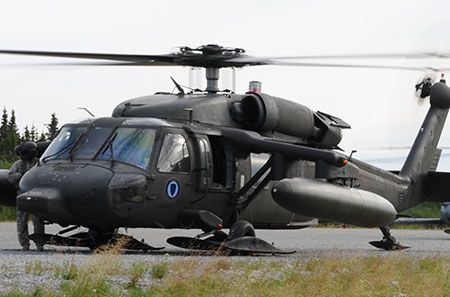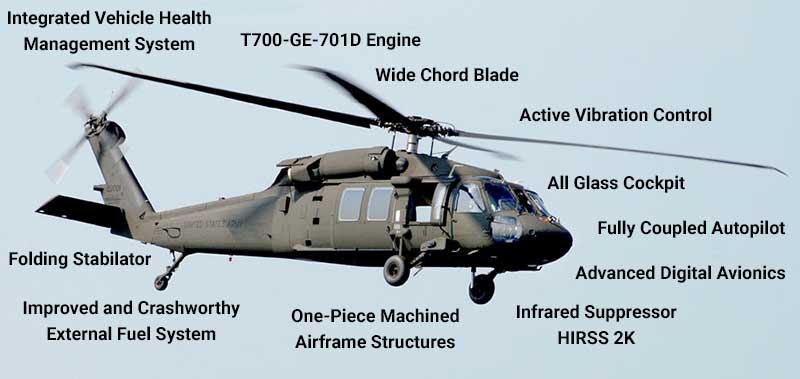Mastering the Skies: UH 60 Helicopter Upkeep Checklist
Mastering the Skies: UH 60 Helicopter Upkeep Checklist
Blog Article
Browsing Uh 60 Helicopter Regulations and Conformity Requirements

Regulatory Framework Overview
The governing framework governing UH-60 helicopter procedures includes a complicated collection of rules and standards developed by aeronautics authorities. These guidelines are created to make certain the secure and effective procedure of UH-60 helicopters in various atmospheres. The Federal Air Travel Administration (FAA) plays a main function in establishing and imposing these laws, which cover a variety of operational elements, consisting of airworthiness standards, pilot credentials, upkeep requirements, and operational procedures.
Compliance with these laws is crucial for helicopter operators to preserve the highest degree of security and functional honesty. Failure to adhere to these guidelines can lead to severe repercussions, including accidents, injuries, and regulative assents. Helicopter operators have to remain informed regarding the latest regulatory advancements and ensure that their operations are in complete compliance with all relevant rules and criteria.
Airworthiness Inspections and regulations
Amidst the governing structure governing UH-60 helicopter operations, an important emphasis rests on conformity with Airworthiness Directives and carrying out extensive examinations to support security criteria and functional integrity. Airworthiness Directives (ADs) are released by air travel authorities to deal with unsafe problems in airplane, including the UH-60 helicopter, and mandate details activities to be taken by drivers or owners. Conformity with Advertisements is mandatory, and failing to stick to these directives can cause serious consequences, consisting of grounding of the airplane.
Regular examinations are extremely important to making certain the airworthiness of UH-60 helicopters. By sticking to a strict evaluation program, operators can spot and deal with possible problems without delay, thus enhancing the safety and reliability of UH-60 helicopter procedures.
Pilot Qualifications and Training

Pilot training for UH-60 helicopters is detailed and covers a vast array of subjects, consisting of aircraft systems, emergency procedures, navigating, and mission-specific training. In addition, pilots undergo simulator training to practice numerous emergency situations in a regulated environment. This training helps pilots create the necessary abilities to manage difficult circumstances efficiently.


Moreover, recurring training and expert development are crucial for UH-60 pilots to stay present with the most recent regulations, modern technology, and best techniques. By purchasing pilot certifications and training, operators can boost security, maximize efficiency, and guarantee compliance with regulative requirements in the operation of UH-60 helicopters.
Functional Limitations and Needs
Pilot credentials and training offer as the foundation for understanding the operational restrictions and requirements associated with UH-60 helicopter procedures (uh 60). These functional limitations are put in area to ensure the safety and security of the team, travelers, and the airplane itself. Functional limitations might include variables such as weather conditions, weight restrictions, altitude restrictions, and functional borders. It is essential for go pilots to be well-versed in these restrictions to make educated decisions throughout flight procedures. In addition, compliance demands, such as sticking to particular trip courses, communication methods, and emergency treatments, are crucial for keeping operational safety and security and regulatory compliance. Pilots need to stay present with all operational limitations and demands through routine training, briefings, and evaluates to mitigate risks and guarantee efficient and secure UH-60 helicopter procedures. By focusing on adherence to these functional guidelines, pilots can improve the overall security and efficiency of their goals while maintaining governing criteria.
Emergency Situation Treatments and Compliance Screening
Efficient emergency treatments and detailed conformity screening are important elements of preserving functional security and governing adherence in UH-60 helicopter official statement operations. Emergency situation treatments encompass methods for different scenarios, consisting of engine failures, fires, hydraulic problems, and more. Pilots and team members need to be well-versed in these treatments to respond quickly and effectively in emergencies. Normal conformity testing makes sure that the helicopter meets all regulative needs set forth by aeronautics authorities. This testing involves complete assessments, checks, and examinations to verify that the airplane is airworthy and in conformity with all applicable laws.
Additionally, conformity testing may include simulations of emergency scenarios to examine the crew's action and the helicopter's efficiency under tension. By focusing on emergency situation treatments and compliance testing, UH-60 drivers can alleviate risks and demonstrate their commitment to security and regulatory compliance.
Conclusion
In final thought, adherence to regulatory framework, conformity with airworthiness directives, pilot qualifications and training, operational restrictions, and emergency situation procedures are necessary for navigating the regulations and needs of running a UH-60 helicopter. uh 60. It is critical for operators to prioritize safety and security and make sure complete compliance with all suitable guidelines to keep the airworthiness and operational integrity of the airplane
Navigating the regulative landscape surrounding UH-60 helicopter procedures requires a nuanced understanding of the intricate internet of rules and conformity requirements.Conformity with these regulations is necessary for helicopter operators to maintain the highest possible degrees of safety and operational integrity.In the middle of the regulatory framework governing UH-60 helicopter operations, an important focus exists on compliance with Airworthiness Directives and carrying out comprehensive assessments to support safety requirements and functional dependability.Efficient emergency treatments and complete conformity testing are essential parts of maintaining operational safety and governing adherence in UH-60 helicopter procedures. Normal conformity screening makes certain that the helicopter fulfills all regulative requirements set forth by air travel authorities.
Report this page